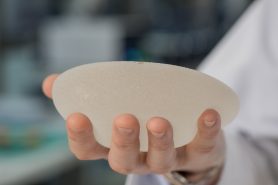- Diseases
- Acoustic Neuroma (14)
- Adrenal Gland Tumor (24)
- Anal Cancer (68)
- Anemia (2)
- Appendix Cancer (16)
- Bile Duct Cancer (26)
- Bladder Cancer (72)
- Brain Metastases (28)
- Brain Tumor (232)
- Breast Cancer (714)
- Breast Implant-Associated Anaplastic Large Cell Lymphoma (2)
- Cancer of Unknown Primary (4)
- Carcinoid Tumor (8)
- Cervical Cancer (158)
- Colon Cancer (166)
- Colorectal Cancer (116)
- Endocrine Tumor (4)
- Esophageal Cancer (44)
- Eye Cancer (36)
- Fallopian Tube Cancer (8)
- Germ Cell Tumor (4)
- Gestational Trophoblastic Disease (2)
- Head and Neck Cancer (12)
- Kidney Cancer (128)
- Leukemia (342)
- Liver Cancer (50)
- Lung Cancer (286)
- Lymphoma (278)
- Mesothelioma (14)
- Metastasis (30)
- Multiple Myeloma (100)
- Myelodysplastic Syndrome (60)
- Myeloproliferative Neoplasm (4)
- Neuroendocrine Tumors (16)
- Oral Cancer (100)
- Ovarian Cancer (172)
- Pancreatic Cancer (160)
- Parathyroid Disease (2)
- Penile Cancer (14)
- Pituitary Tumor (6)
- Prostate Cancer (146)
- Rectal Cancer (58)
- Renal Medullary Carcinoma (6)
- Salivary Gland Cancer (14)
- Sarcoma (238)
- Skin Cancer (296)
- Skull Base Tumors (56)
- Spinal Tumor (12)
- Stomach Cancer (64)
- Testicular Cancer (28)
- Throat Cancer (92)
- Thymoma (6)
- Thyroid Cancer (96)
- Tonsil Cancer (30)
- Uterine Cancer (80)
- Vaginal Cancer (16)
- Vulvar Cancer (20)
- Cancer Topic
- Adolescent and Young Adult Cancer Issues (20)
- Advance Care Planning (10)
- Biostatistics (2)
- Blood Donation (18)
- Bone Health (8)
- COVID-19 (362)
- Cancer Recurrence (120)
- Childhood Cancer Issues (120)
- Clinical Trials (630)
- Complementary Integrative Medicine (20)
- Cytogenetics (2)
- DNA Methylation (4)
- Diagnosis (232)
- Epigenetics (6)
- Fertility (62)
- Follow-up Guidelines (2)
- Health Disparities (14)
- Hereditary Cancer Syndromes (126)
- Immunology (18)
- Li-Fraumeni Syndrome (8)
- Mental Health (116)
- Molecular Diagnostics (8)
- Pain Management (62)
- Palliative Care (8)
- Pathology (10)
- Physical Therapy (18)
- Pregnancy (18)
- Prevention (916)
- Research (390)
- Second Opinion (74)
- Sexuality (16)
- Side Effects (604)
- Sleep Disorders (10)
- Stem Cell Transplantation Cellular Therapy (216)
- Support (402)
- Survivorship (320)
- Symptoms (182)
- Treatment (1786)
BIA-ALCL study shows multi-team treatment key to achieving best outcomes
3 minute read | Published July 14, 2020
Medically Reviewed | Last reviewed by an MD Anderson Cancer Center medical professional on July 14, 2020
A team of researchers from across five disciplines at MD Anderson recently published the largest prospective study on breast implant associated anaplastic large cell lymphoma (BIA-ALCL), shedding light on the best treatment for patients with this uncommon cancer.
“This study underscores the critical importance of a standard treatment approach with a multi-team evaluation,” says Mark Clemens, M.D., the senior author of the study, which published in the Annals of Surgery.
Researchers in breast surgery, hematopathology, radiation oncology, lymphoma oncology and plastic surgery came together to develop an algorithmic approach to treat the study participants, all of whom reached complete remission.
A clear path for BIA-ALCL treatment
Solid tumor staging of BIA-ALCL was first described by the authors at MD Anderson in 2016. While previous studies on BIA-ALCL relied on reviews of the literature or case reports of patients worldwide, this five-year study included 52 patients, all at MD Anderson, at various stages of the disease. Of those patients, 25% were treated at the early stage of the disease, called stage IA, but several had stage IV, with metastasis to the bone marrow, liver, and bowels.
“What we found is that most patients can be treated with surgery alone, and importantly in advanced disease, we clarified who best responds to the addition of chemotherapy, targeted immunotherapy, radiation and stem cell transplants,” Clemens says.
This study also demonstrated that with early diagnosis, better outcomes could be achieved. While all patients in this study reached remission, the Food and Drug Administration (FDA) has previously reported that 33 deaths have occurred worldwide overlapping the time the study was conducted. This emphasizes that a good prognosis is dependent on appropriate diagnosis and a standardized multi-team treatment approach.
Shedding light on an uncommon cancer
Breast implant associated anaplastic large cell lymphoma is classified as an uncommon cancer by the FDA. It is believed to be associated with textured-surface breast implants, and the overall incidence is low. Between one in 355 to 50,000 of these individuals develop the disease depending on different types of textured implants, with the highest risk devices recalled by the FDA in 2019.
Consequently, little has been known about this cancer until recently. The FDA first reported a possible link between breast implants and anaplastic large cell lymphoma in 2011. For years, it was difficult to diagnosis and treat. Then, in February 2020, new diagnosis guidelines developed by the MD Anderson researchers in collaboration with the NIH and FDA were published in the Journal of Clinical Oncology, helping providers recognize, diagnose and stage BIA-ALCL.
This latest study builds on that work and underlines the need for increased awareness of this disease. Patients should talk to their doctors if they notice breast swelling, asymmetry or unexplained sensations of fullness – all BIA-ALCL symptoms. If the physician suspects BIA-ALCL, ultrasound-guided fine needle aspiration of the fluid collection around the implant is used the obtain a correct diagnosis.
“This study demonstrated the importance of pre-operative diagnostic testing and imaging,” Clemens says. “This optimizes treatment, patient outcomes and long-term surveillance.”
Refer a patient to MD Anderson online or by calling 1-877-563-0193.
Related Cancerwise Stories

This study underscores the critical importance of a standard treatment approach with a multi-team evaluation.
Mark Clemens, M.D.
Physician





